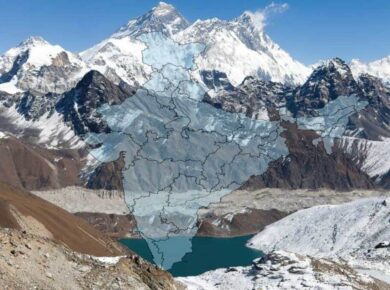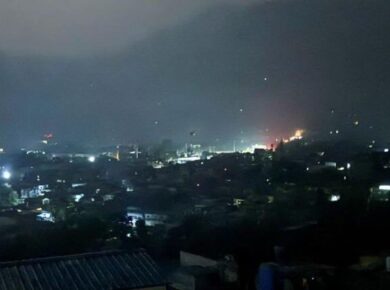Natural Vegetation of India
- Tropical Evergreen Rain Forests
- Deciduous or Monsoon Type of Forests
- Tropical dry Deciduous Forests
- Arid Forests and Desert Vegetation
- Tidal or Mangrove Forests
- Mountain Forests
| Tropical Evergreen Forests |
|
| Deciduous Forests |
|
| Tropical dry Forests |
|
| Arid or Desert Forests |
|
| Tidal Forests |
|
| Mountain forests |
|
Forest Cover of India

- 34 Percent geographical area under forest cover till 2015
- The total forested area in India is about 63.73 million hectares.
- In the last 10 years, forest cover in the country has increased by 3.31 million hectares, showing an average 0.46% increase every year.
|
Problems of Forestry |
|||
| Over grazing | Forest Fire | Reckless Cutting of Trees | Jhum Cultivation |
Government Initiatives
- Reserve & Protected forests
- Van Mahotsav Programme → Thousands of trees are planted every year in the months of July and August
- Forest Research Institute at Dehradun → For promotion and preservation the forests properly
- National Forest policy
National Forest Policy, 1988
- Conservation of Biodiversity, Afforestation & Check of soil erosion
- 33 % Geographical area shall be forest covered
- Develop Social Forestry → (Agro Forestry, Community Forestry & Forestry by officials)
Social Forestry
- Mainly to reduce pressure on traditional forests by planting trees esp. for fuel wood, Timber & other social supplies
- Help in checking water and wind erosion by acting as shelter belts
- Employment & additional income generation
| Agro Forestry |
|
| Community Forestry |
|
| Forestry by officials |
|
Forest Protection by Government officials
| Reserved Forests |
|
| Protected Forests |
|
| Unprotected Forests |
|
Forest & Wildlife Protection Programmes by Government
National Park
- Relatively large area consisting of one or more ecosystems, operates at National Level
- No human activity or settlement allowed i.e. human interference is totally prohibited
- Villagers cannot graze their animals + Extremely strict rules about jungle produce collection for ex. Honey.
Wildlife Sanctuary
- Regulated human activities are allowed → Grazing of animals, Firewood collection, Tourism
- can be created for a particular specie which is not the case with national; operates at State Level
- A sanctuary can be upgraded to a national park but not vice versa.
Biosphere Reserve
- Unique ecosystem of terrestrial & coastal areas internationally recognized by UNESCO under Man and Biosphere (MAB) programme
- People are allowed to live, own private land & carry own traditional activities but only in outer zone.
| Core zone | Central area that has to be kept undisturbed of all activities except research (which don’t disturb wildlife) |
| Buffer zone | Some light activities like tourism, fishing, grazing etc. are allowed which don’t disturb the core zone. Research activities are encouraged here |
| Transition zone | Outmost part & not delimited but activities have to be harmonious with the biosphere reserve |
Conservation Reserves
- Can be declared by the State Governments in any area owned by the government
- Particularly the areas adjacent to National Parks and Sanctuaries and those areas which link one Protected Area with another
- Such declaration should be made after having consultations with the local communities
Community Reserves
- Can be declared by the State Government in any private or community land, not comprised within a National Park, Sanctuary or a Conservation Reserve
- Mainly where an individual or a community has volunteered to conserve wildlife and its habitat














8 comments
thankyou very much to share the knowledge.
soo many thanks
Forest Cover in India is 24% not 34%
21.05% forest cover in India according to state of forest report 2011 not 24%
THIS IS THE BEST EVER WEBSITE…………………….
There is not a website like this anywhere….! Extrodinary sir
nice initiative sir
Thank u sir